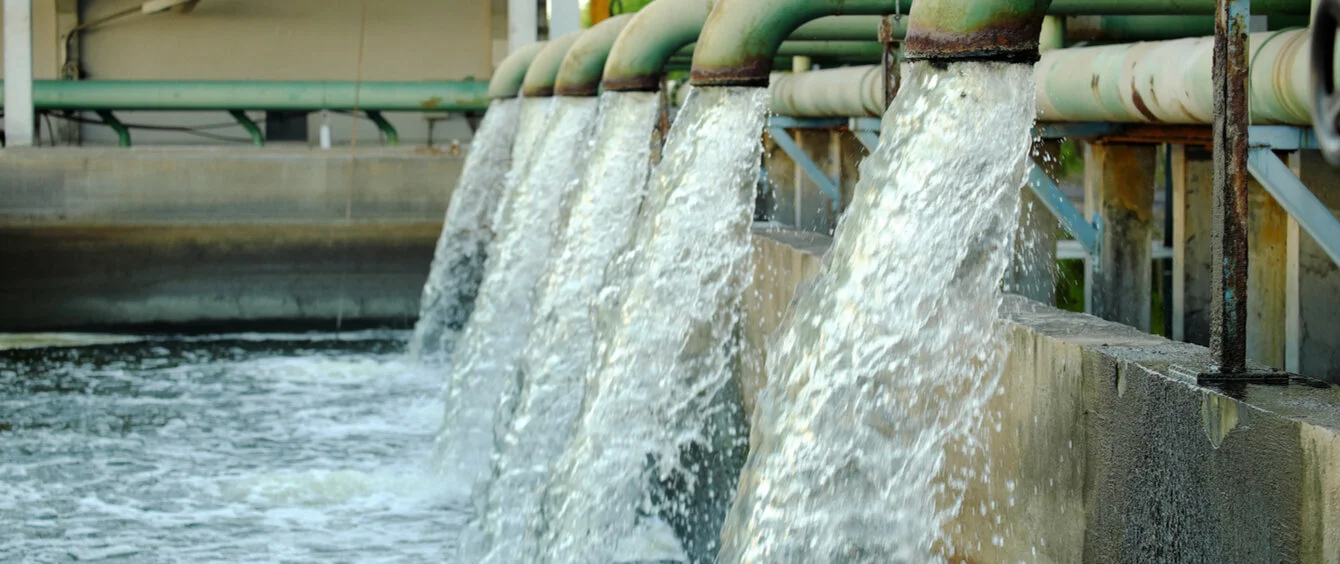“The more contaminated the wastewater, the better” declares Juliana Rolf. Since the beginning of the year, the researcher, who works at the Münster University of Applied Sciences, has been feeding microorganisms in her test facility on the Steinfurt campus with the high-carbohydrate and high-sugar wastewater of a brewery. “When these microorganisms metabolize the organic matter, three main substances are created: hydrogen, methane and carbon dioxide,” Rolf explains in a conversation with the en:former. “We can adjust the composition with a variety of parameters,” she adds.
Two wastewater treatment steps
The research team, which includes Ms. Rolf, is involved in the HyTech project which is exploring how to shape the decomposition of the wastewater’s organic components to maximise hydrogen and methane yield. This involves the wastewater flowing through two reactors in series.
What is referred to as ‘dark fermentation’ occurs in the first reactor. This term describes bacterial decomposition without light and oxygen, which results in a gas blend consisting almost exclusively of hydrogen and carbon dioxide.
Afterwards, the wastewater is ‘fed’ to archaea in a second reactor. These primeval microorganism have decomposed the organic remnants of plants and animals to fossil gas for millions of years. And this is precisely how they produce mostly methane and carbon dioxide in the wastewater treatment process.
Optimising the positive energy footprint
“The essential components can then be separated out of the resulting gas blends,” explains Rolf. They are not used to produce energy during tests, because the yield is too small. However, they are analysed in detail.
The obtained carbon dioxide is not recycled in the research facility, either. But once scaled up to industry levels, the carbon dioxide could be processed as appropriate to protect the climate. Using modern carbon capture and storage (CCS) or carbon capture use and storage (CCUS) methods, the greenhouse gas could be sequestered or stored and used in other applications.
By means of the pilot project, the research team has demonstrated that the technique indeed has potential. In the predecessor undertaking, named BioTech2, which was financed by the EU Regional Development Fund Interreg VA, the team of scientists used wastewater from a confectionery producer in a test plant of similar design. The upshot? A total of 262,000 cubic metres of hydrogen and 1.75 million cubic metres of methane were produced from the company’s annual 350,000 cubic metres of wastewater.
In this case, a system scaled up appropriately would require over 600 kilowatts of primarily thermal energy to conduct the process, but net generation would exceed 500 kilowatts.
Business case: wastewater treatment
Rolf says that producing hydrogen and methane for use as fuel is a key proposition when it comes to being sustainable and energy efficient. She goes on to claim that, however, this will probably not suffice to amortise this type of plant over a reasonable period of time. “The main task at hand for potential users is to reduce effluent loads,” the engineer declares.
Wastewater treatment is a major cost issue for industrial operations. Oftentimes, a sewage plant with sufficient capacity is key to the selection of a location. Absent such infrastructure, plants have to pre-treat severely contaminated wastewater themselves. Rolf is convinced that HyTech technology has what it takes to considerably reduce wastewater disposal costs.
More than half the journey completed
Thanks to follow-up financing from the German Ministry for Economic Affairs and Climate Protection, the research team is now in a position to optimise the BioTech2 method within the scope of HyTech. To this end, the scientists have modified certain process parameters such as the design of the fermentation vessel. In addition, Rolf and her team intend to determine the combination of feed volume, circulation speed and temperature range that maximises process efficiency.
Rolf anticipates the need for another four to five years of research before a deployable system can be built. The technology has a readiness level of about 5.5 out of 9 on the TRL yardstick developed by NASA to assess the maturity of technological innovations. Whether it will be marketable after reaching the top of the scale will depend on other factors such as hydrogen, methane and wastewater treatment costs, the researcher explains. She is optimistic nevertheless: “Our goal is for the organic production of hydrogen and methane to become an integral element of wastewater treatment.”
